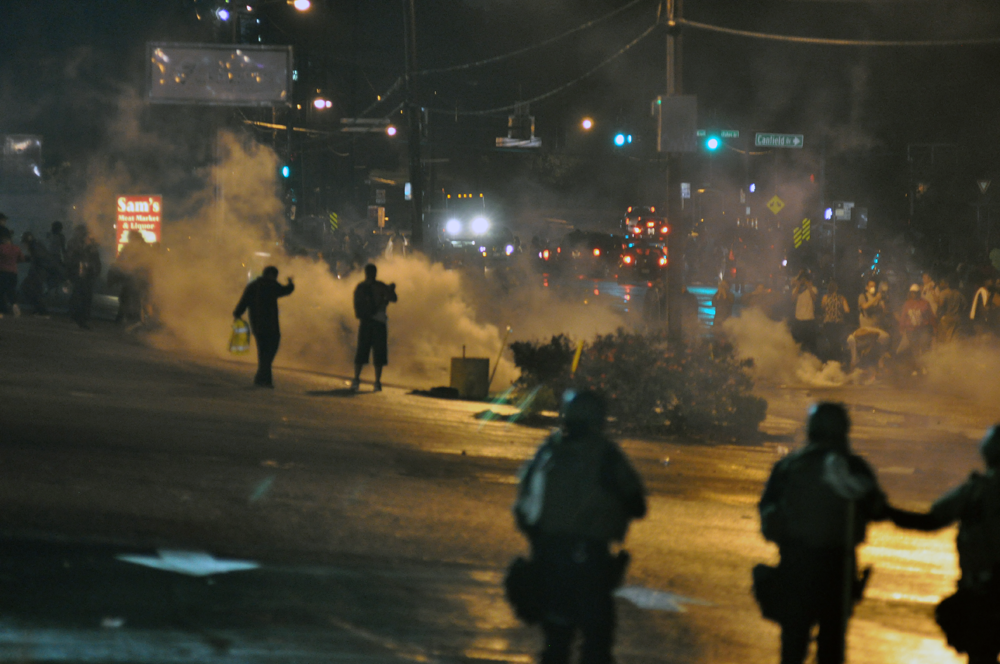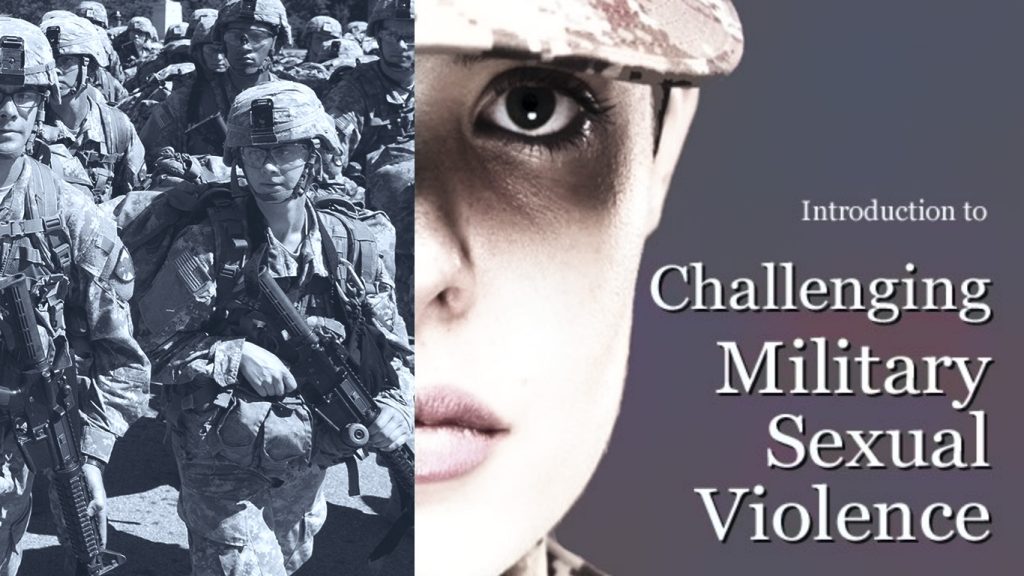NEWS ANALYSIS
After the killing of Michael Brown in Ferguson, Missouri, by a white cop, in the middle of a street in broad daylight — and the unexpected global outrage it provoked – the subsequent disproportional response by local law enforcement has made militarization of the police a hot topic that even the most tepid news organizations are recognizing.
Following decades of hyped “wars” on drugs and terror, the federal government got the ingenious idea of equipping local police departments with surplus weapons from the armed forces — presumably because they weren’t using them fast enough around the world and they were offered even more and better weapons by “defense” contractors. Surely, they reasoned, local constabularies could assist in protecting the citizenry from the twin scourges of drugs and terror with which we are at “war.” While this transfer of military equipment has been going on for many years now, the over-the-top police response to protests in Ferguson has shone a light on it and prompted questions about the wisdom of providing police departments with tanks, drones and other implements of (mass) destruction used for fighting actual wars.
Of course, there are a few examples of this mentality that pre-dates “the war on terror.” Even as far back as 1985, the Philadelphia police bombed the home of a local organization, MOVE, which may have presaged some of the problems that could arise with excessive weaponry. MOVE was not especially popular among the populace, but all united in outrage at the bombing.
But it’s only now that most news analysts and policymakers are noticing the rather predictable repercussions of arming local cops like a commando squad in a war zone: Departments with some very powerful new toys will find excuses to use them, because after all, once you are given a hammer, everything is a nail. But one reality about police use of heavy military equipment has gone largely undiscussed. It’s been cloaked by propagandistic news reports and almost universal glib praise for the skill and professionalism of America’s armed forces, but it’s something the MLTF and other groups have always known.
But let’s back up for some history, and expose a few of the many myths and tales about wars and warriors that have been perpetrated with increasing frequency since 9/11, because these are all part of the distorted world view that Americans are so prone to.
After the Vietnam War, the United States was hesitant to use military force. Antiwar demonstrations toppled the Johnson administration and GI resistance was at an all-time high. Subsequent presidents needed to tread very carefully, only engaging in military actions that engendered minimal danger to US troops. Thus, Ronald Reagan invaded Grenada and Bill Clinton used only air power in Serbia. At the same time, the draft was eliminated and the armed forces “professionalized.” Put another way, the armed forces were staffed with those who had few options for upward mobility. Children of privilege and wealth were pretty much exempted as the ranks were filled overwhelmingly by poor and working people who, while being told they were defending freedom and democracy were, in truth, defending US imperial interests.
One of the major myths involves the idea that the troops coming back from Vietnam encountered antagonism and scorn from the American public. Isolated instances of soldiers being cursed or spat upon are recounted as if they were pervasive. The proliferation of support from the antiwar movement to GI’s is ignored. This strategy accomplishes a number of goals. First, it discredits the antiwar movement even though it, almost alone, gave real support to returning troops. Second, it shields the government from attack for its abject failure to serve the needs of Vietnam vets, a failure that continues with today’s vets as well. The more the antiwar movement can be blamed for the suffering of Vietnam vets, the less culpable the real criminal, the US government, appears.
Finally, and this is where the recent militarization of the police comes in, this twisted history reinforces the myth that American service members are heroes defending and expanding freedom and democracy around the globe. This is not to denigrate the motives or idealism, however misguided, of individual members of the armed forces, but to contrast the image we are presented here at home with the reality that exists in the countries the US occupies. News reports are rife with stories of how American troops have built rapport with, and strengthened, local communities, while travesties like Abu Ghraib and murderous assaults are portrayed as the work of deranged individuals not representative of our men and women in uniform.
But across the country, in poor communities generally and poor communities of color in particular, police are now seen as an occupying force. Ferguson is a town whose population is two-thirds African-American and its police force is almost entirely white (its mayor notes it has a Hispanic and a couple of Asians, along with as many as four or five African-Americans). (On August 14 the Washington Post reported that this non-representation in local government departments and bodies is pervasive across the country.). In media reports, whites in Ferguson are quoted blaming the unrest and demonstrations on outsiders and praising the police and defending their action, but the African-American community sees things very differently. That community is the target of the militarized police in Ferguson. African-Americans there assumed Michael Brown’s death was unjustified because, in their experience, occupying forces do not respect fundamental rights.
Thus, poor communities of color across the country can empathize with people around the world who are the victims of US occupation. Dick Cheney notwithstanding, people in those countries do not see us as liberators, but as hostile invaders. In this country, police departments armed with military weapons are not parts of the communities they allegedly serve. Indeed, it was not very long ago that the concept of “community policing” attempted to change the adversarial dynamic between the police and poor communities. The infusion of military weaponry effectively ended any such possibility. The police, too, are invaders, serving not the community in which they operate but the well-heeled and privileged.
We can learn an important lesson from the sudden unpopularity of militarized police across the US, if we will but look: US forces around the world are not all that welcome, regardless of what we are told, just as police are not all that welcome when they enter communities in tanks and armored personnel carriers, regardless of what they claim.
___
Photo: “Ferguson Day 6, Picture 44” by Loavesofbread – Own work. Licensed under Creative Commons Attribution-Share Alike 4.0 via Wikimedia Commons



